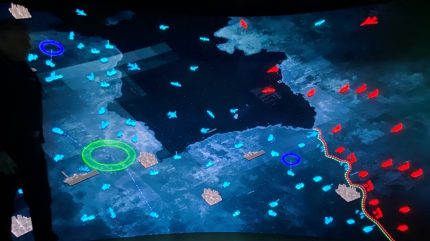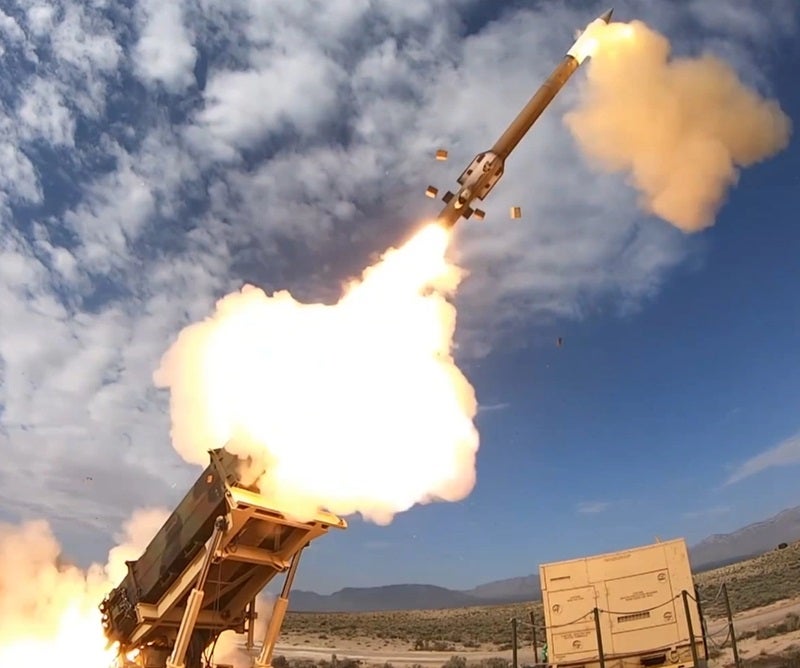
Northrop Grumman is planning to make its Intregrated Battle Command System (IBCS) accessible to soldiers at the tactical level through a mobile app, with an intention to deliver the capability within the next five years.
This next step in the IBCS programme comes in response to discussions with the US Army regarding its requirements.
The IBCS capability, which first reached initial operating capability (IOC) in April 2023, connects sensors and effectors across land, sea, and air that were never designed to work together into one command and control (C2) system, providing a holistic picture of the battlespace.
This agnostic network allows systems to cohere and share data to execute an optimal response to enemy threats, which is why IBCS is often considered in an integrated air and missile defence (IAMD) context.
At present, IBCS is directed through numerous Engagement Operation Centres (EOCs), effectively mobile shelters hosting a C2 centre comprising between eight to ten personnel. As many as six EOCs are deployed to support one Patriot battery.
Soon, however, this grand picture of the battlespace will be more readily accessible to soldiers on the ground.

US Tariffs are shifting - will you react or anticipate?
Don’t let policy changes catch you off guard. Stay proactive with real-time data and expert analysis.
By GlobalDataWhile the concept remains an area of focus at an early stage, and with a delivery timeframe in mind, questions remain about how an IBCS application would be delivered. This includes digital security as a mobile app, as well as questions around the role of a tactical force with a view of the operational level.
Army Technology contacted Northrop Grumman but the corporation did not provide comment before publication.
IBCS: how it works
In an immersive demonstration during IDEX 2025 in February, a Northrop Grumman spokesperson explained to Army Technology that sensors in the IBCS system will make recommendations of where to place assets to optimise coverage of an area of operations.
The orchestration is done automatically through a computer programme called the Integrated Defense Designer, which has a number of algorithms.
“We have the ability to put it in almost a semi autonomous mode,” the Northrop Grumman spokesperson explained. “The operator is on top of the loop. The system is making the recommendations and is going to launch on its own, unless you deny it.”

The data collected is grouped into priorities. The more important data gets higher priority over the network, so that it gets passed around, and lower priority data would have more time. If it becomes congested, the IBCS system ensures that the higher priority data take the lead.
“We were given requirements for our software to be very modular, so it’s very modular,” the spokesperson said, adding that the code was broken down into segments, rather than in a single monolithic block.
“If we need to go in and modify some code or add a new module, we can do that quickly and easily,” the spokesperson detailed.
Demand signal
Besides the United States, Poland is currently the only other operator which uses IBCS to optimise its IAMD architecture, which includes an assortment of US and European missiles and systems that constitute its short-range PILICA+ and NAREW air defense structures. Poland’s IBCS reached IOC in December 2024.
“I know for a fact that our project office that manages this programme have investigated using IBCS in a variety of scenarios across the globe,” the Northrop Grumman spokesperson said.
“It’s the same storyline. Maybe different threats, different distances, of course, but the same concepts, same interest, and same demand signal.”
Northrop Grumman IBCS spokesperson
Other nations have expressed interest in Northrop Grumman’s integrator product. The spokesperson revealed official visits to countries in the Asia-Pacific region.
Likewise, many Gulf countries consulted the US supplier during IDEX 2025 to discuss their unique requirements and existing architectures, without naming any specific nations.
“It’s the same storyline,” the spokesperson said. “Maybe different threats, different distances, of course, but the same concepts, same interest, and same demand signal.”



